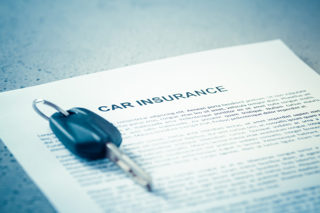What type of vehicles do you run?
If you have a number of executive vehicles, think about where to place them in the schedule of vehicles.
Companies often make the mistake of listing executive vehicles at the top, with more mundane vehicles underneath.
“The insurer might start looking at the list and think, ‘no, not for me’,” says Len Benson.
But putting high value vehicles at the bottom isn’t a good move either as it can be a nasty surprise for insurers when they have gone through a list of otherwise mundane vehicles. Benson’s advice is to put the expensive vehicles in the list at random.
Are your vehicles fitted with telematics?
Some insurers will offer an upfront discount on the basis of the entire fleet being fitted with driver behaviour telematics.
Others will reduce your premium once you have telematics data which shows driver behaviour is improving and your accident rates have lowered.
For high-value vehicles or certain brands, your insurer may insist on a tracking device being fitted.
Do you have a driver training programme?
“Driver training impresses insurers,” says Len Benson. “If your drivers have undergone training or you have an ongoing programme then tell your insurers about it.”
Do you have strict policies and procedures?
You need to have policies regarding the use of the vehicle, as well as post-accident procedures. Every accident should be investigated, whether the driver is at fault or not, according to Len Benson.
Drivers shouldn’t be able to have an accident and simply laugh it off. Benson says: “With any accident, you need to ask the driver ‘how did this happen?’ It engenders a culture that accidents are unacceptable. This is a valuable company asset and an accident is money off the bottom line.”
He also advises strict procedures for commercial vehicles, as these are often the source of a lot of claims. Specify that there should be no passengers other than fellow employees otherwise it is extra exposure.
Do you have the right company culture?
A culture of safety is the most important factor in lowering insurance premiums, according to
Len Benson.
Having the right policies and procedures in place, carrying out risk assessments and driver training, as
well as fitting telematics to monitor and manage driver behaviour should all help to create a safety culture.
The right culture should be driven from the top with the managing director or chief executive pushing the policy, but employees should be encouraged to share their ideas about improving fleet safety.


















Keith Thomas - 21/05/2015 10:37
Utmost good faith is a basic principle of an insurance contract and applies to both parties. The insurers must give you all relevant details of their cover including any restrictions or exclusions. You must reveal all material facts that effect the risks to be insured and certainly not conceal such information as seems to be suggested by the article re the location of the vans to be insured. Such non disclosure could result in claims being declined. Certainly no reputable broker would condone this advice.